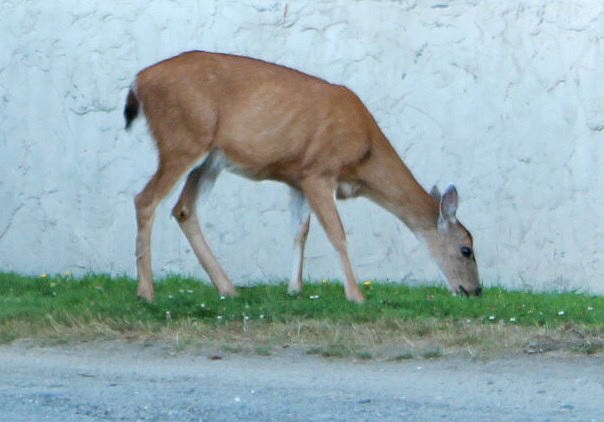By David Clements
With a sickening thud, our plans for getting back nice and early to our accommodation that evening were foiled. Meanwhile, the deer’s plans to get across the road were also derailed.
The damage made our car undrivable, but fortunately neither my wife nor I were hurt. The accident occurred at a curve in a highway on Vancouver Island and the deer was committed to jumping onto the road so it was an unavoidable event.
However, not all conflict between wildlife and humans is unavoidable.
Consider the ant.
Francis Shaeffer wrote in Pollution and the Death of Man: “We have the right to rid our houses of ants; but what we have no right to do is to forget to honour the ant as God made it, out in the place where God made the ant to be. When we meet the ant on the sidewalk, we step over him. He is a creature, like ourselves; not made in the image of God, it is true, but equal with man as far as creation is concerned. The ant and the man are both creatures.”
Many people have trouble seeing other creatures as their “equal” in this sense, especially “lowly” or often despised creatures like ants. Why should we respect our fellow creatures?
Consider the spider. Spiders are much more reviled than ants, and yet they do good work for us, controlling insect pests. We would do well to leave them be when we find them outside.
Consider the bear. In British Columbia, this notorious species of wildlife is a source of numerous human-wildlife conflicts, even more than normal this year due to wildfires bringing them into proximity with humans more. Yet bears, like deer, are magnificent creatures which garner considerable respect and much has been done to try to educate people to minimize conflicts.
Consider the raccoon. These increasingly urbanized creatures are often very damaging to structures or other property (e.g., a friend just lost her grapes to raccoons).
Consider the rat. This is one of the most successful urban creatures of all, but it does not get too much respect — and can be costly to deal with, speaking from experience.
There are many other animals that we do love to see and interact with…. just think of the song birds in our backyards or salmon, or whales or butterflies.
If we want to have backyards, and if we want to live amidst the beautiful scenery we enjoy in British Columbia, we need to extend some grace to our non-human neighbours.
It is not always going to be convenient, and can even sometimes be dangerous, but living with wildlife is part of what it means to live in beautiful B.C. Upon learning of our collision with the deer, a friend of mine on Vancouver Island quipped “now you are true Islanders!”
David Clements, Ph.D. is Professor of Biology and Environmental Studies at Trinity Western University
